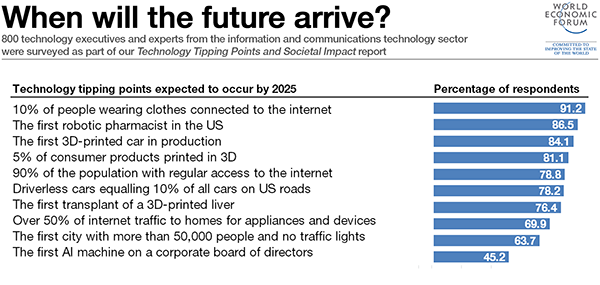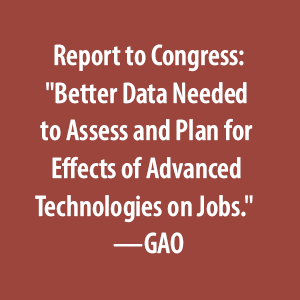
Clueless or Inept?
Feds Clueless About Impact of Automation
After six years of media frenzy and taxpayer concern over automation, still no action...or even a plan.
U.S. government admits it’s “unable to quantify automation’s effect on the workforce”
If not so serious, it’d be funny
A recent fedscoop article exposed how little the U.S. government knows and understands about the impact of automation on the country’s workforce.
Fedscoop didn’t have to dig too deep to find the scary facts; a recent paper from the Government Accountability Office (GAO) did all the damage.
The title alone is disturbing: WORKFORCE AUTOMATION: Better Data Needed to Assess and Plan for Effects of Advanced Technologies on Jobs
All of which means, of course, that the people charged with getting the workforce ready for technological disruption (see: Littler’s TIDE) are clueless. It’s been nearly six years (2013) since the looming cloud of high-tech disruption slid in over the American workplace and its 155 million job holders. Spanning two administrations, countless congressional inquiries, tons of paper reports, and millions of taxpayer dollars, the future plight of workers is still so little understood, says the GAO, that, because of it, insufficient action has been taken to mitigate any potential disaster.

It’s a sobering and sad report, especially in view of reports from the Bureau of Labor Statistics (BLS) like: The fall of employment in the manufacturing sector.
Clueless…or inept?
The U.S. is not alone in its cluelessness; plenty of other countries are just as clueless and appearing similarly impotent to help. Preparedness has got to begin somewhere, so why not with the biggest economy on the planet that easily possesses the greatest means to make an impact and to take leadership?
The 77-page GAO report was ordered by the Department of Labor (DOL) for the DOL’s Bureau of Labor Statistics (BLS). The BLS is tasked to identify occupations projected to experience staffing pattern changes because of the use of robotics or any other aspect of automation. The tardiness of the DOL in requesting such a GAO study is in itself cause for major concern.
Unless you’ve been under a rock since 2013, the projected effects of automation on jobs is the single-most important topic for workers anywhere on the globe, especially loud has been the finger-pointing of experts forecasting the total demise of jobs in America.
With an annual budget of over $600 million, the BLS is “the principal fact-finding agency for the U.S. government in the broad field of labor economics and statistics.” After six years of media frenzy and taxpayer concern over automation, the BLS, like white on rice, should have every aspect of automation’s impact on the U.S. workforce at the ready so that the DOL can plot and execute remedies.
“DOL agreed with GAO’s recommendation, and plans to identify and recommend data collection options to fill gaps in existing information about how the workplace is affected by new technologies, automation, and artificial intelligence,” according to the report. “DOL also stated that it will continue coordinating with the Census Bureau on research activities in this area.”
Continued what? Research! Geez. How about some action?
What the GAO said
“GAO was asked to examine workforce issues related to the adoption of advanced technologies. This report examines (1) what is known about how the adoption of advanced technologies affects the U.S. workforce ; (2) federal efforts to track these effects; (3) considerations that led selected firms to adopt advanced technologies and the risks they faced; and (4) ways technology adoption has affected the workforce at selected firms.
“Advanced technologies are likely to affect the U.S. workforce by enabling firms to automate certain work tasks. Questions exist about how prepared federal agencies are to monitor workforce changes, promote economic growth, and support workers who may be negatively affected by automation.
“Although existing federal data provide useful information on the U.S. workforce, they do not identify the causes of shifts in employment. As a result, it is difficult to determine whether changes are due to firms adopting advanced technologies, such as artificial intelligence and robots, or other unrelated factors. In lieu of such data, GAO analyzed employment trends and characteristics of jobs that selected researchers identified as susceptible to automation.”
That bears repeating: “Existing federal data…do not identify the causes of shifts in employment.”
GAO recommends
“GAO recommends that DOL develop ways to use existing or new data collection efforts to identify and systematically track the workforce effects of advanced technologies. DOL agreed with GAO’s recommendation, and plans to identify and recommend data collection options to fill gaps in existing information about how the workplace is affected by new technologies, automation, and artificial intelligence.”
The call is for more research, more data. Remedies seem way off in the distance, when it is really a time for action. It’s a formula for a disaster in the making.
See also:


